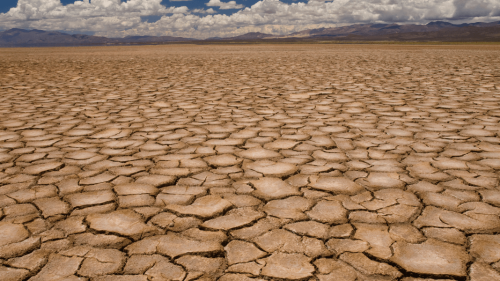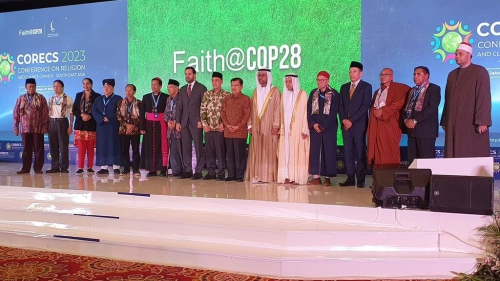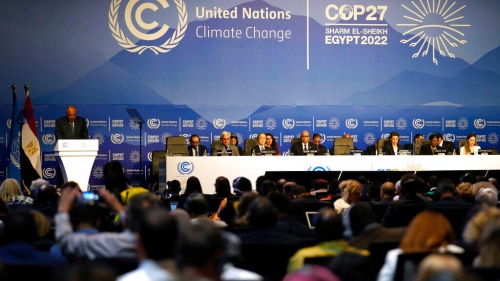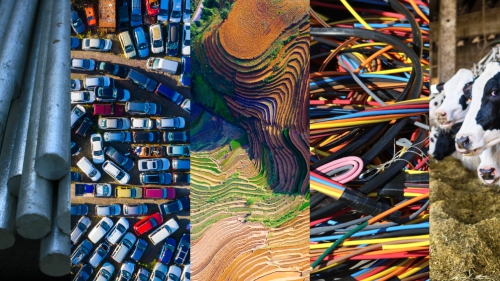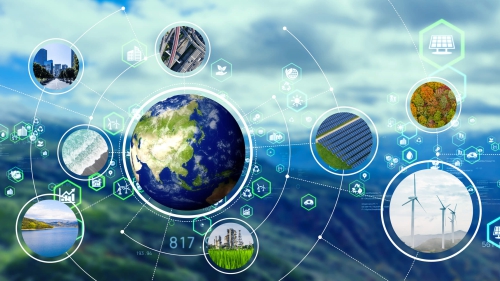How to Avoid a Climate Disaster
It’s human nature to want to do something when you’re confronted with a problem—especially one as big as climate change. The good news is that there are things everyone can do. Although the most impactful steps we can take to avoid a climate disaster must happen at the governmental level, you have power to effect change as a citizen, a consumer, and an employee or employer.
As a Citizen
When you ask yourself what you can do to limit climate change, it’s natural to think of things like driving an electric car or eating less meat. This sort of personal action is important for the signals it sends to the marketplace—see the next section for more on that point—but the bulk of our emissions comes from the larger systems in which we live our daily lives.
When somebody wants toast for breakfast, we need to make sure there’s a system in place that can deliver the bread, the toaster, and the electricity to run the toaster without adding greenhouse gases to the atmosphere. We aren’t going to solve the climate problem by telling people not to eat toast.
But putting this new energy system in place requires concerted political action. That’s why engaging in the political process is the most important single step that people from every walk of life can take to help avoid a climate disaster.
In my own meetings with politicians, I’ve found that it helps to remember that climate change isn’t the only thing on their plate. Government leaders are also thinking about education, jobs, health care, foreign policy, and more recently, COVID-19. And they should: All those things demand attention.
But policy makers can take on only so many problems at once. And they decide what to do, what to prioritize, based on what they’re hearing from their constituents.
In other words, elected officials will adopt specific plans for climate change if their voters demand it. Thanks to activists around the world, we don’t need to generate demand: Millions of people are already calling for action. What we do need to do, though, is to translate these calls for action into pressure that encourages politicians to make the tough choices and trade-offs necessary to deliver on their promises to reduce emissions.
Whatever other resources you may have, you can always use your voice and your vote to effect change.
Make calls, write letters, attend town halls. What you can help your leaders understand is that it’s just as important for them to think about the long-term problem of climate change as it is for them to think about jobs or education or health care.
It may sound old-fashioned, but letters and phone calls to your elected officials can have a real impact. Senators and representatives get frequent reports on what their offices are hearing from constituents. But don’t simply say, “Do something about climate change.” Know where they stand, ask them questions, and make clear that this is an issue that will help determine how you vote. Demand more funding for clean energy R&D, a clean energy standard, or a price on carbon, for example.
Look locally as well as nationally. A lot of the relevant decisions are made at the state and local levels by governors, mayors, state legislatures, and city councils—places where individual citizens can have an even bigger impact than at the federal level. In the United States, for example, electricity is primarily regulated by statewide public utility commissions, made up of either elected or appointed commissioners. Know who your representatives are and keep in touch with them.
Run for office. Running for the U.S. Congress is a tall order. But you don’t have to start there. You can run for state or local office, where you’ll probably have more impact anyway. We need all the policy smarts, courage, and creativity in public office that we can get.
As a Consumer
The market is ruled by supply and demand, and as a consumer you can have a huge impact on the demand side of the equation. If all of us make individual changes in what we buy and use, it can add up to a lot—as long as we focus on changes that are meaningful. For example, if you can afford to install a smart thermostat to reduce your energy consumption when you’re not at home, by all means do it. You’ll cut your utility bill and your greenhouse gas emissions.
But reducing your own carbon emissions isn’t the most powerful thing you can do. You can also send a signal to the market that people want zero-carbon alternatives and are willing to pay for them. When you pay more for an electric car, a heat pump, or a plant-based burger, you’re saying, “There’s a market for this stuff. We’ll buy it.” If enough people send the same signal, companies will respond—quite quickly, in my experience. They’ll put more money and time into making low-emissions products, which will drive down the prices of those products, which will help them get adopted in big numbers. It will make investors more confident about funding new companies that are making the breakthroughs that will help us get to zero.
Without that demand signal, the innovations that governments and businesses invest in will stay on the shelf. Or they won’t get developed in the first place, because there’s no economic incentive to make them.
Here are some specific steps you can take:
Sign up for a green pricing program with your electric utility. Some utility companies allow homes and businesses to pay extra for power from clean sources. In 13 states, utilities are required to offer this option. (You can see whether your state does by checking the Green Pricing Programs map at C2ES—the Center for Climate and Energy Solutions.) Customers in these programs pay a premium on their electric bill to cover the extra cost of renewable energy, an average of one to two cents per kilowatt-hour, or $9 to $18 a month for the typical American home. When you participate in these programs, you’re telling your utility company that you’re willing to pay more to address climate change. That’s an important market signal.
But what these programs don’t do is cancel out emissions or lead to meaningful increases in the amount of renewable power on the grid. Only government policies and increased investments can do that.
Reduce your home’s emissions. Depending on how much money and time you can spare, you can replace your incandescent lightbulbs with LEDs, install a smart thermostat, insulate your windows, buy efficient appliances, or replace your heating and cooling system with a heat pump (as long as you live in a climate where they can operate). If you rent your home, you can make the changes within your control—such as replacing lightbulbs—and encourage your landlord to do the rest. If you’re building a new home or renovating an old one, you can opt for recycled steel and make the home more efficient by using structural insulated panels, insulating concrete forms, attic or roof radiant barriers, reflective insulation, and foundation insulation.
Buy an electric vehicle. EVs have come a long way in terms of cost and performance. Although they might not be right for everyone (they’re not great for lots of long-distance road trips, and charging at home isn’t convenient for everyone), they’re becoming more affordable for many consumers. This is one of the places where consumer behavior can have a huge impact: If people buy lots of them, companies will make lots of them.
Try a plant-based burger. I’ll admit that veggie burgers haven’t always tasted great, but the new generation of plant-based protein alternatives is better and closer to the taste and texture of meat than their predecessors. You can find them in many restaurants, grocery stores, and even fast-food joints. Buying these products sends a clear message that making them is a wise investment. In addition, eating a meat substitute (or simply not eating meat) just once or twice a week will cut down on the emissions you’re responsible for. The same goes for dairy products.
I have a higher-than-average carbon footprint, so I’m taking extra steps to do my part. In the book I briefly mention how I’m offsetting my own emissions. I spend about $5 million every year to offset my family’s carbon footprint. As of now, the standard calculation for carbon footprints is based on an estimate of $400 per ton of emissions. But since the way we calculate carbon footprints is still in its infancy, I take our family’s carbon footprint and double it to make sure we are fully covering our footprint and then some.
I also like to think of my investments in zero-carbon technologies as another kind of offset for my emissions. Investing in companies doesn’t make my carbon footprint smaller. But if I’ve picked any winners, they’ll be responsible for removing much more carbon than I am responsible for creating. I have given more than $1 billion toward innovations and ideas that I hope will help the world get to zero—including affordable and reliable clean energy, low-emissions cement, steel, meat, and more.
Although heavy emitters like me should use less energy, the world overall should be using more energy because that’s a key element to moving countries out of poverty and expanding our global economy. There is nothing wrong with using more energy as long as it’s carbon-free. The key to addressing climate change is to make clean energy just as cheap and reliable as what we get from fossil fuels.
*****








